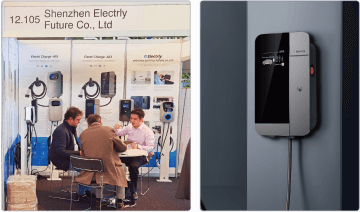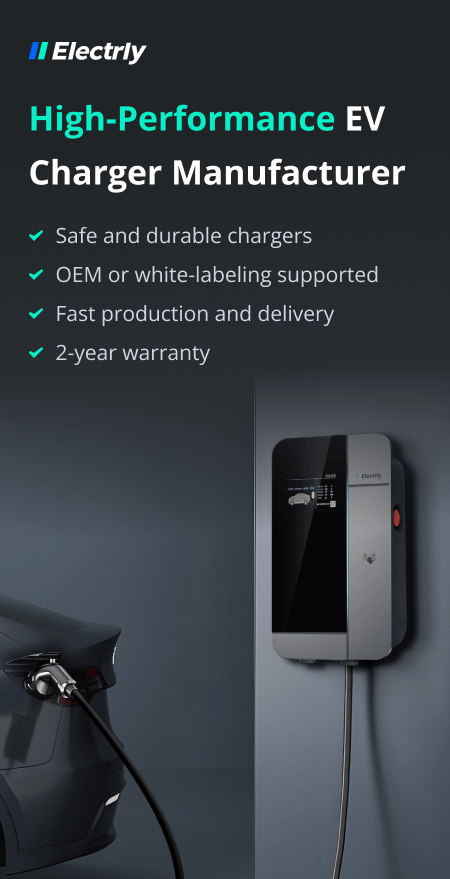While electric vehicles and gas-powered cars are the same in many ways, for those who just now purchased their very first EV or are considering purchasing one, the “refueling” process is different and may seem confusing and daunting at first.
Today, we at Electrly will be going over different EV charger plugs, cables, and connectors in hopes that it will help allow newcomers to better understand the terminology regarding charging their electric vehicles.
What Are EV Charging Cables?
Just as gasoline fuel pumps are a necessary tool for refueling a gas-powered car, EV charging cables are essential in the same way for electric vehicles. EV charging cables are the equipment for vehicles to receive electricity from power sources, whether at public charging stations or residential charging stations.
It’s also important to note that EV charging cables are available in four different setups or “modes.” This should not be confused with EV charging levels, which don’t necessarily correspond with a charging mode. Here, we’ll be breaking down the differences between Mode 1, Mode 2, Mode 3, and Mode 4 charging cables.
Mode 1

Mode 1 EV charging is the setup that is plugged in via a regular AC socket outlet through a standard plug and an extension cord. Because of the use of a simple extension cord, there’s no direct communication between the EV and the power source, which lack any sort of safety system that protects against shocks.
This charging mode should only be used to charge light EVs such as e-scooters and e-bikes, and should not be used for charging electric-powered vehicles including BEVs or PHEVs.
Mode 2

Mode 2 charging cables are often bundled together with EVs when purchased. These cables plug directly from your EV into a standard wall socket, with an In-Cable Control and Protection Device (IC-CPD) which helps to protect both the EV and the residential electrical system.
While most of these portable charging cables are cheap to use, safe to charge, and convenient to store, it is also incredibly slow. Most Mode 2 cable setups only deliver up to 2.3 kW of power, therefore it takes a long time to charge up a full EV.
Mode 3

As the most common and easily accessible EV charging setups that utilize AC charging, Mode 3 cables are significantly faster EV chargers than Mode 1 and Mode 2. This method of charging utilizes a stationary charging station that must be hardwired to a building’s power supply in most cases.
Mode 3 charging is common among public charging stations, workplaces, educational facilities, and apartment complexes. It is also the common mode of charging for EV home charging.
Furthermore, not all Mode 3 charging requires hardwire connection. Some home-use Mode 3 charging stations use a 3-phase plug instead. Still, all these Mode 3 chargers must be installed by a certified electrician (which can be quite expensive).
Mode 4

Mode 4 charging cables are far more powerful than Mode 1, 2, and 3 chargers, and are also quite less common. One major difference between Mode 4 charging and Mode 1, 2, and 3 charging cables is how AC power is converted. The AC to DC power conversion takes place within the charging station itself before entering the vehicle, whereas Mode 1, 2, and 3 charging convert from AC to DC in the vehicle itself.
Mode 4 charging is also known as DC fast charging, as it charges EVs with high-power direct current, and these chargers must be properly connected to a dedicated high-voltage charging facility. They’re usually only seen at public fast charging stations.
EV Charging Connectors
EV charging connectors are charging plugs that are inserted into the charging sockets of EVs, just as gas pumps are inserted into the gasoline tank of ICEs. Similarly to how wall outlets and power sockets vary depending on the region, EV charging plugs and sockets are also different depending on the EV’s particular region or country, brand, and charging level.
Connectors for AC charging
Type 1 charging connector

Type 1 plugs are used mostly with vehicles from Japan and North America. Also known as SAE J1772, these connectors are single-phase and deliver a power output of up to 7.4 kW.
Type 2 charging connector

Type 2 plugs are the official plug standard for vehicles in Europe. Also referred to as Mennekes, these plugs deliver up to 22 kW for three-phase AC charging.
GB/T AC connector

The GB/T AC plugs are the standard charging connectors for vehicles sold in China. The GB/T AC charging plug is a single-phase/three-phase connector and is capable of delivering power from 8 kW up to 28 kW.
Connectors for DC charging
Combined Charging System

CCS (Combined Charging System) is the fastest charging plug in both North America (CCS1) and Europe (CCS2). It’s referred to as a combined charging system because it was developed based on the Type 1 connector with a pair of added DC charging pins.
The CCS1 charging plug is the most common fast charging cable in North America and is considered the fastest next to Tesla’s Supercharger technology. It can deliver charging speeds of up to 350 kW.
The CCS2 is the dominant fast-charging cable in Europe and it delivers between 50 kW and 350 kW of DC power.
CHAdeMO connector

The CHAdeMO connector is the standard charging cable in Japan, boasting charging speeds of up to 200 kW in addition to bidirectional charging. While Asia currently manufactures the largest amount of EVs that are compatible with these plugs, these connectors are also slowly becoming more popular in Europe though they may soon be phased out in favor of CCS2 connectors being considered the standard.
CHAdeMO has also announced that the company is currently developing a new charger that can charge between 200kW and 400 kW. With that being said though, Europe and North America don’t currently support those sorts of charging speeds.
GB/T DC connector

GB/T DC connectors are also one of China’s standard charging cables. Currently, the most recent GB/T DC charger connector has a maximum charging speed of up to 237.5 kW. At the moment, this is the only DC fast charging option available in China aside from the new Chaoji technology which is looking to overtake the market.
Chaoji connector

Released in 2020, Chaoji is an ultra-high-power EV charger developed based on CHAdeMO and GB/T standards, which is also sometimes referred to as CHAdeMO 3.0. Chaoji’s charging technology has many new features including liquid cooling and a much lighter and more compact size with a cable that’s smaller in diameter.
While previous iterations only supported speeds of up to 400 kW, the Chaoji connector is capable of DC fast charging over 500 kW in the future with the upcoming CHAdeMO 4.0 technology that may release sometime later in 2023.
Thanks to its faster speeds, new features, and the fact that many major markets are already backing it, Chaoji may end up dominating the EV charging market as the new standard charging connector in the future.
Tesla Connector

Though their connector looks exactly like an AC Type 2 socket with a similar charging pin setup, Tesla’s proprietary Supercharger plug only works with Tesla vehicles. This all-in-one connector support Level 1, 2, and 3 charging with power delivery up to 250 kW at Supercharger stations.
Frequently Asked Questions
1. Do all public charging stations use the same charging connector?
In short, not all charging stations have the same charging connector setup.
For the most part, Level 2 charging stations mostly use the two common types of EV plugs. Tesla owners use the proprietary connectors for Tesla brands, and all other public charging stations feature SAE J1772 connectors.
For Level 3 DC charging stations, you will find stations with CCS 2 plugs or CHAdeMo plugs depending on locations and charging networks.
To quickly search and locate the closest charging station with compatible charging connectors, try Elecrtly’s Find Charging Station Near Me feature for free!
2. How do I know which charging cable setup suits my situation?
Portable Charging Cables - Portable charging cables may be useful when away from all other means of charging, and they can be a lifesaver during emergencies. In the case that you travel a lot or planning a road trip, having a portable EV charger is always a good idea.
At-Home Charging - At-home charging is likely the ideal solution for most EV owners. Mode 3 home charging stations are recommended for at-home charging, as they allow users to recharge their vehicles at night while they sleep.
Public Charging Stations - Public charging stations are useful for charging one’s vehicle while at work, at school, or while running errands in a shopping center. Public charging stations usually feature Mode 3 setups.
Tesla Charging - The best option for charging your Tesla at home is always to install a Mode 3 Tesla wall connector in the home garage. Mode 3 and Mode 4 public charging stations are also available in most cities.


